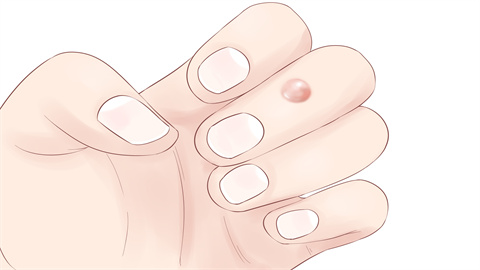What should I do if an inflamed sebaceous cyst remains red and swollen without improvement?
Under normal circumstances, persistent inflammation, redness, and swelling of a pilar cyst may be caused by inadequate local hygiene, repeated friction and irritation, bacterial infection, worsening sebaceous gland duct blockage, or secondary cellulitis. Depending on the specific situation, patients can improve symptoms through general care, medication, surgical treatment, or other methods. Detailed analysis is as follows:

1. Inadequate Local Hygiene
Accumulation of dirt and debris around the pilar cyst can easily promote bacterial growth, intensify inflammatory responses, and lead to prolonged redness and swelling. Clean the affected area daily with warm water, avoid using irritating cleansers, and gently pat dry with a clean towel after washing to keep the area dry.
2. Repeated Friction and Irritation
Repeated rubbing from clothing or accessories on the cyst site can damage the local skin barrier, worsen inflammation, and prolong redness and swelling. Wear loose, soft clothing to prevent tight or coarse fabrics from contacting the affected area, remove nearby jewelry, and minimize friction.
3. Bacterial Infection
Bacteria such as *Staphylococcus* can invade the cyst, causing infection and continuous release of inflammatory mediators, resulting in persistent redness and swelling. Under medical guidance, topical antibiotics such as mupirocin ointment, fusidic acid cream, or compound polymyxin B ointment may be applied. Gently massage the area during application to enhance absorption, and avoid squeezing the lesion.
4. Worsening Sebaceous Gland Duct Blockage
Obstruction of sebum discharge within the cyst leads to excessive buildup and aggravated duct blockage, making it difficult for inflammation to resolve. Under medical supervision, oral medications such as roxithromycin capsules, cefradine capsules, or minocycline hydrochloride tablets may be prescribed. Additionally, avoid spicy and greasy foods to reduce sebum production.
5. Secondary Cellulitis
If the inflammation from the pilar cyst spreads, it may cause cellulitis in surrounding tissues, leading to expanding and persistent redness and swelling. Prompt medical attention is required. If an abscess forms, incision and drainage may be necessary. After surgery, follow medical advice to take oral medications such as amoxicillin capsules, cefixime dispersible tablets, or levofloxacin tablets. Regular dressing changes are essential to maintain wound cleanliness.
In daily life, maintain overall skin hygiene, especially in areas prone to sweating; avoid frequently touching or squeezing the cyst to prevent infection spread; adopt a light diet rich in fresh fruits and vegetables; seek timely medical evaluation if abnormalities in the cyst are noticed, to avoid delayed treatment and reduce the risk of recurrent inflammation.




